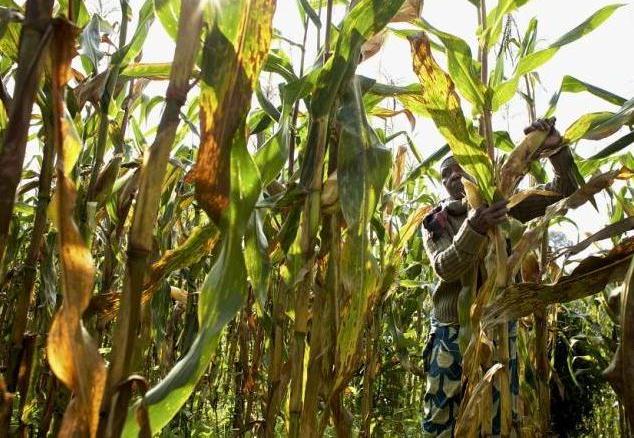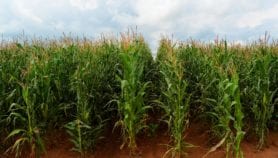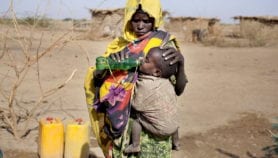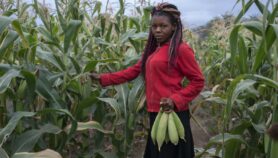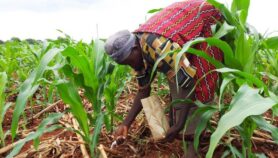By: Sam Otieno and Gilbert Nakweya
Send to a friend
The details you provide on this page will not be used to send unsolicited email, and will not be sold to a 3rd party. See privacy policy.
[NAIROBI] Scientists have made progress in identifying maize varieties that could combat maize lethal necrosis (MLN), a viral disease adversely affecting the crop in parts of Sub-Saharan Africa and threatening food security.
Experts who attended a workshop in Kenya last month (12-14, May) discussed issues on diagnostics and management of the disease, an emerging threat, which if curbed could help improve food security in Africa.
The workshop that brought together 150 participants, was organised by the International Maize and Wheat Improvement Center (CIMMYT), the Alliance for a Green Revolution in Africa (AGRA) and the Bill and Melinda Gates Foundation in collaboration with the Kenya Agricultural and Livestock Research Organisation.
“We have now identified promising lines with tolerance to MLN, which was shared by partners and stakeholders in Sub-Saharan Africa in May 2015.”
Yoseph Beyene, CIMMYT, Kenya
Yoseph Beyene, a maize breeder from CIMMYT says that MLN is a new disease to Africa which has proved quite challenging in finding a resistant maize variety against it. “We have now identified promising lines with tolerance to MLN, which was shared by partners and stakeholders in Sub-Saharan Africa in May 2014,” Beyene told SciDev.Net.
Beyene added that although it is imperative to control the spread of the devastating viral disease, the development and deployment of new MLN-resistant varieties will offer a lasting solution.
A statement released by CIMMYT during the workshop stated that MLN was first detected in Kenya’s Rift Valley region in 2011 and quickly spread to other parts of the country, and then to Tanzania and Uganda. CIMMYT added that MLN has since been reported in the Democratic Republic of Congo, Ethiopia, Rwanda and South Sudan.
In Kenya alone, the disease is associated with an estimated loss of US$50 million a year, CIMMYT said.
According to Boddupalli Prasana, director of CIMMYT’s Global Maize Program, a vital step in curbing the spread of MLN is to improve its surveillance and diagnostic capacity throughout Africa, particularly at the common cross-country border points, noting that monitoring seed movement could prevent further spread through seeds contaminated by MLN-causing viruses.
“Farmers also need to be sensitised on appropriate agronomic practices that reduce disease incidence and severity,” added Prasana. “These practices include crop rotation; at least two months of maize-free period (meaning no maize growing on their farms in a synchronised manner across villages); timely planting, proper detection and prompt destruction of any infected plants; planting certified maize seeds and crop diversification where possible.”
Joseph DeVries, director of AGRA’s Program for Africa’s Seeds, said when MLN-tolerant seed is finally released, it could help benefit farmers. He remains optimistic that through applied research aimed at providing solutions for farmers, success will be achieved.
Caroline Samoei, a maize farmer from Kenya’s Narok County, pleaded with scientists and governments to solve the problem urgently. “Maize is the sole source of our livelihood. I depend on it to feed my family and to educate my children because I am widowed,” Samoei said.Samoei added that she had incurred huge losses in harvests for the last two years, a situation that has threatened food security in her household and the education of her children.
This article has been produced by SciDev.Net’s Sub-Saharan Africa desk.


